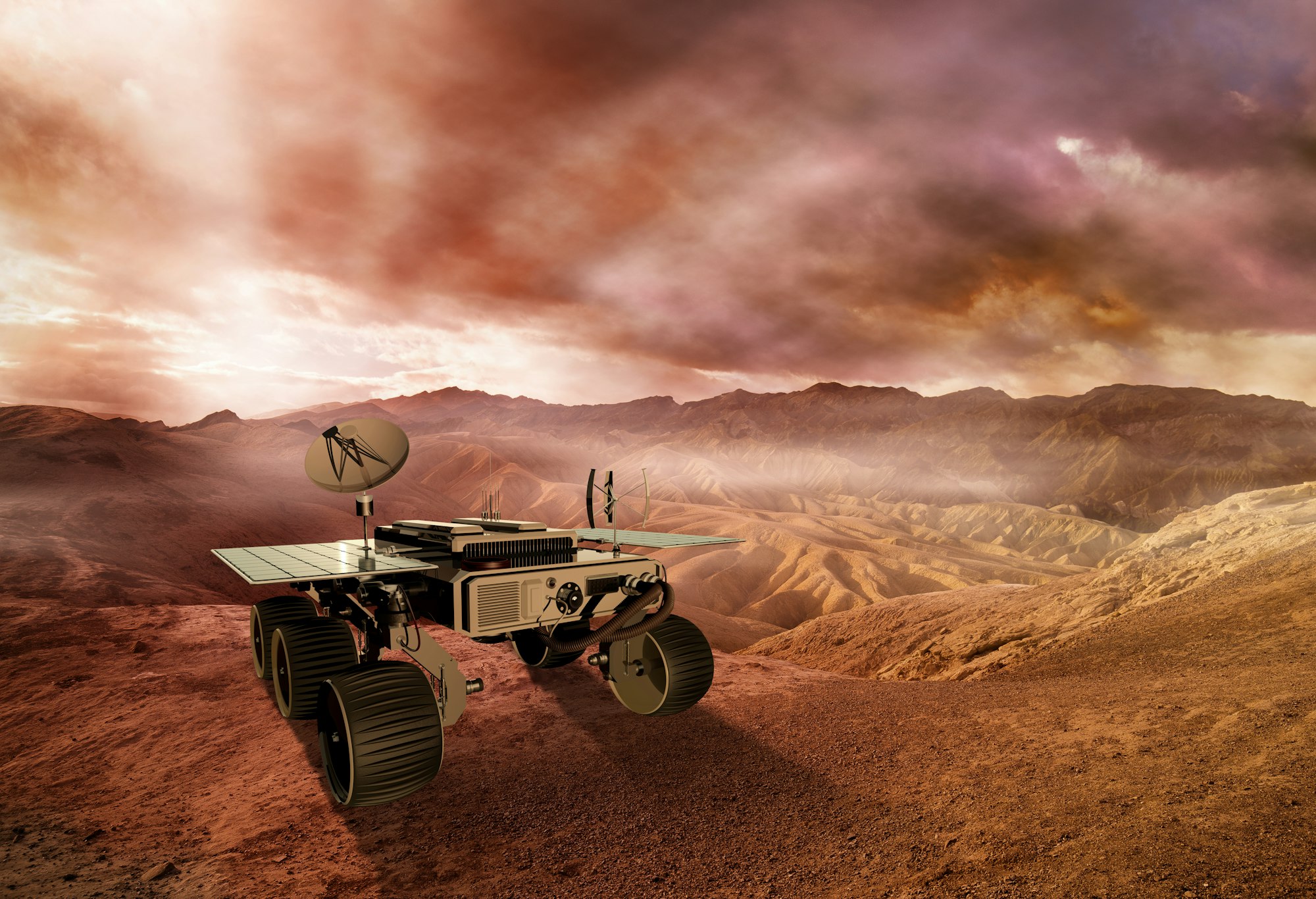Discover Airbus’ Latest Rovers: Codi and Charlie
Airbus is currently testing two advanced rover prototypes, named Codi and Charlie, in a quarry in Bedfordshire. These rovers are engineered to support future space missions to the Moon and Mars, designed to tackle tough terrains, collect valuable samples, and operate autonomously without human guidance.

Codi: The Four-Wheeled, Sample-Collecting Rover
Meet Codi, a four-wheeled rover equipped with a robotic arm and high-resolution cameras to navigate and collect samples. This arm allows Codi to autonomously pick up rocks and secure them in containers for analysis, mimicking tasks it would perform on missions to Mars. Codi’s design enhances its predecessor, the Sample Fetch Rover, and boasts a driving precision crucial for accurate sample collection on planetary surfaces.
Charlie: Six Wheels and a High-Tech Suspension
Charlie stands out with its six wheels and a sophisticated rocker-bogie suspension system, enabling it to navigate over obstacles double the size of its wheels without flipping or getting stuck. This feature makes Charlie perfect for the rugged landscapes of the Moon and Mars. Additionally, Charlie is equipped with an advanced navigation system, initially developed for ESA’s ExoMars Rosalind Franklin rover, enhancing its ability to maneuver autonomously, crucial for the prolonged missions where direct human control is impractical.
How Codi and Charlie Will Transform Lunar and Martian Missions
Lunar Missions: Building and Supporting Moon Bases
Airbus envisions the Moon as a crucial step toward Mars, with rovers like Codi and Charlie playing pivotal roles. On the Moon, these rovers will assist astronauts by transporting materials and aiding in the construction of sustainable bases. The challenging lunar conditions are ideal for testing these rovers’ capabilities before deploying similar technologies on Mars.
Martian Exploration: Advancing Sample Collection
The quest to explore Mars gets a boost with Codi’s capability to autonomously gather and secure samples, potentially uncovering signs of life. Its sophisticated sample preservation methods are essential for future Mars sample return missions. Charlie, with its superior navigation technology, is poised to help navigate Mars’ challenging terrain, ensuring safer and more efficient exploration missions.
Collaborative Efforts with ESA
In partnership with the European Space Agency (ESA), Airbus is integrating its rover technology into future space missions. Charlie’s testing of navigation systems designed for the upcoming ExoMars Rosalind Franklin rover, set to launch in 2028, underscores this collaborative effort. These trials, critical in simulating Martian conditions, emphasize the importance of rigorous testing to perfect the rovers for their eventual space missions.
The Crucial Role of Field Testing in Space Exploration
Field testing in environments like the Bedfordshire quarry is vital for validating the rovers’ functionality in extraterrestrial settings. As highlighted by ESA’s Mars Sample Return project leader, Pantelis Poulakis, these trials ensure the rovers can withstand and operate in the harsh conditions of space. Following NASA’s lead in regular robotics testing, Airbus is committed to a rigorous evaluation process, preparing Codi and Charlie for their future roles on the Moon and Mars.
Future Exploration Powered by Robotics
The deployment of autonomous rovers like Codi and Charlie is set to revolutionize space exploration. These rovers extend the reach of human missions by handling tasks that would be risky or impossible for astronauts, ultimately making space missions more efficient and cost-effective. As we push the boundaries of what’s possible in space, robots will be at the forefront, shaping the future of interplanetary exploration.
Airbus is putting its innovative space rover prototypes, Codi and Charlie, through rigorous tests in a Bedfordshire quarry, preparing them for groundbreaking missions to the Moon and Mars. Equipped with state-of-the-art technology for autonomous navigation and sample collection, these rovers are gearing up to revolutionize space exploration.

FAQ for Airbus’ New Rovers, Codi and Charlie
1. What specific technologies do Codi and Charlie have for space exploration?
Codi is equipped with a robotic arm and high-resolution navigation cameras, which help it pick up and store rock samples autonomously. This is crucial for missions where direct human interaction is limited, such as on Mars. Charlie features a rocker-bogie suspension system, allowing it to navigate over large obstacles effortlessly, and utilizes an advanced navigation system developed for ESA’s upcoming ExoMars mission, making it ideal for autonomous operations on rough terrains like those of the Moon and Mars.
2. How will Codi and Charlie support future lunar missions?
Codi and Charlie are being developed to aid in building and sustaining human outposts on the Moon. They are designed to transport materials and equipment around lunar bases, helping astronauts in the construction and maintenance of these bases. Their ability to operate in the Moon’s low-gravity environment and harsh conditions makes them perfect for such tasks, preparing them for similar roles on Mars in the future.
3. Why are field tests like those in Bedfordshire important for rover development?
Field tests in environments like the Bedfordshire quarry are essential to ensure that the rovers can handle real-world challenges similar to those they will face on extraterrestrial surfaces. These tests allow engineers to observe how the rovers navigate obstacles, manage terrain, and perform tasks under conditions that mimic those on the Moon and Mars. The insights gained from these tests are crucial for refining the rovers’ designs and operational protocols, ensuring they are fully prepared for their missions in space.
Sources The Guardian


